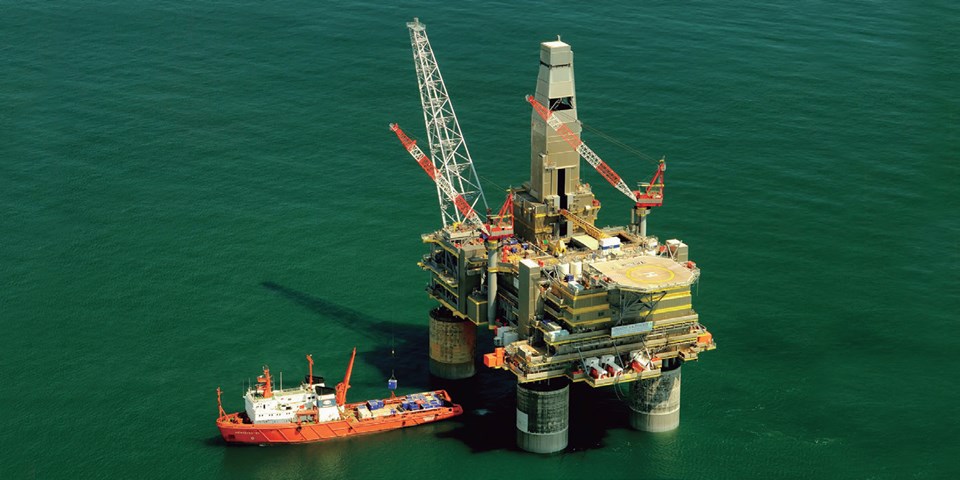In response, Sandvik Group has released a new grade of stainless steel, which has been adapted to high purity and the demand of oil and gas end-users. Sandvik SAF™ 2205+ is a super-clean material with enhanced pitting corrosion resistance, ideal mechanical properties, and improved weldability.
By Marcus Hillbom, Technical Marketing Manager, Sandvik Materials Technology
By Marcus Hillbom, Technical Marketing Manager, Sandvik Materials Technology
The new duplex stainless steel grade focuses on fulfilling criteria such as having a minimum of 4:1 ratio for all sizes from 75 mm to 260 mm, and lowering limits for both phosphorus and sulfur. The material has also been tested against the new International Association of Oil & Gas Producers (IAOGP) S-563 standard, and the International Organization for Standardization (ISO) 17781 standard.
Due to its corrosion properties, the material is highly suitable for service in environments containing chlorides and hydrogen sulfide. The SAF™ 2205+ is recommended for use in flowlines for the extraction of oil and gas from sour wells, in refineries, and in process solutions contaminated with chlorides. It is particularly suitable for chloride-bearing water or brackish water used as a cooling medium, for use in dilute sulphuric acid solutions, and for the handling of organic acids (acetic acid and mixtures).
The material’s high strength makes it an attractive alternative to austenitic steels in structures subject to heavy loads. The good mechanical and corrosion properties make Sandvik SAF™ 2205+ an economical choice in many applications by reducing the lifecycle cost of the equipment.
Characteristics to consider
Optimized chemical composition Sulfur and phosphorus, both impurity elements, have been reduced to under 0.010% and 0.020% respectively in the new duplex stainless steel, increasing resistance to corrosion and to cracking during welding.
Tougher corrosion tests and tighter acceptance criteria
In line with Sandvik’s internal standard (adopted by the new ISO 17781), weight loss of more than 1.0 g (grams)/m2 is not tolerated, and therefore, can raise operators’ confidence in the material properties of the duplex stainless steel.
PRE-balanced in both material phases
All Sandvik duplex and super-duplex materials are pitting resistance equivalent- (PRE-)balanced, which means both the austenitic and ferritic phases provide high corrosion resistance, throughout the material.
General corrosion
In most media, duplex material possesses better resistance to general corrosion than steel of type 316L stainless steel and 317L stainless steel. Impurities that increase corrosivity are often present in process solutions of acids. If there is a risk of active corrosion, higher-alloyed austenitic stainless steels should be chosen.
Stress corrosion cracking
The standard 304L and 316L stainless steel types are more prone to stress corrosion cracking (SCC) in chloride-bearing solutions at temperatures above 60°C (140°F). Duplex stainless steels are far less prone to this type of corrosion. Laboratory tests have shown good resistance to stress corrosion cracking of Sandvik SAF™ 2205+.
Verified grain structure
Sandvik reports the austenite spacing for material sizes from 50 mm and above, according to DNV RP F112 section 7. This gives extra information on the microstructure of the duplex stainless steel.
Extended hardness testing
An extra hardness test of the new material near the surface ensures a homogeneous structure throughout. This is in line with major customer specifications.
In-depth microscopic examination
To verify a perfect microstructure, pictures are taken in three locations: near surface, mid-radius, and in the bar center, at minimum 500x magnification.
Impact strength
SAF™ 2205+ possesses good impact strength both at room temperature and at low temperatures.
High temperatures
If the new material is exposed to temperatures exceeding 280 °C (540 °F) for prolonged periods of time, the microstructure changes and results in a reduction in impact strength. This effect does not necessarily influence the behavior of the material at the operating temperature.
Ultrasonically-tested
Optimized ultrasonic testing is performed on all material that are 75 mm (3 inches) and above to ensure there are no cracks or inner faults in the steel.
Surface finish and close tolerances
Peel-turning and burnishing the material to a close dimensional tolerance creates a very even and smooth surface finish that enables use of the material even with a small stock.
Full traceability
All bars are positive material identification-(PMI-)tested and ink-marked to ensure full traceability. The 3.1 certificate provides all information on the material’s production and testing.
Complete documentation
A heat treatment chart and micro-pictures are supplied as standard, while an ultrasonic report can also be supplied if necessary.
Achieving standards
The new material fulfils the high material requirements, such as IOGP S-563:2018, ISO17781, NORSOK M630 Ed 6, and the latest editions of NACE MR0175/0103, and API 6A (furnace calibration and ultrasonic).
Material upgrade service
This new material is delivered with most of the tests demanded by the major end-users, already included.
Welding
Welding Of SAF™ 2205+ must be carried out without preheating. Subsequent heat treatment is normally not required. Suitable methods of fusion welding are manual metal-arc welding (MMA/SMAW) and gas-shielded arc welding, with the TIG/GTAW method as first choice.
For SAF™ 2205+ heat-input of <2.5 kJ/mm and an interpass temperature of <150°C (300°F) are recommended.
Machining
The machining of the new material, as with other stainless steels, requires an adjustment of tooling data and machining methods in order to achieve satisfactory results. Compared to Sanmac® 2205, the cutting speed must be reduced when turning Sandvik SAF™ 2205+ with coated cemented carbide tools. The same applies to a majority of other cutting operations. Feed should only be modified slightly and with caution.
Overview
As the oil and gas industry enters more challenging environments and as standards become increasingly more detailed, new materials are required to meet modern needs. Sandvik SAF™ 2205™+ is a valuable addition to the growing demand for improved products and technologies to support the increasingly complex production of hydrocarbons around the world.

